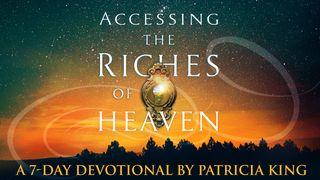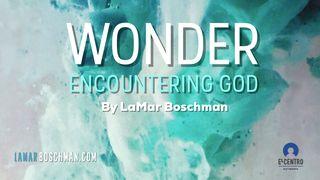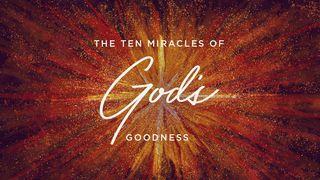Unveiling God's ShineSample

Peter, James and John were the first to perceive the divine shine illuminating the face of the man they had dropped their fishing nets to follow. On the top of a high mountain Jesus was transfigured, meaning his appearance literally changed. His face and form were altered so that they shone like the sun. Suddenly a flesh and blood man became incandescent. Peter, James and John, all terrified by what they saw, clearly perceived in that moment that Jesus was something more than an itinerant rabbi, that Jesus was something more than a prophet, that Jesus was something more than a man. These men who knew Jesus well, who had walked beside him, broken bread with him, watched as he healed and listened to him teach, had never seen him look like this. They had never seen him this radiant.
In the Transfiguration the spiritual reality that had always been there shimmering just under the surface broke through in gorgeous clarity. The Transfiguration was not a dream; it was a historical manifestation of the divine glory that is a historical, the glory that shone before time began.
It’s no wonder, then, that in the first fourteen centuries of the development of Christian art, the scene of the Transfiguration became one of the events most often depicted by iconographers and artists tasked with creating images that would inspire contemplation and worship. The Transfiguration was the event selected to decorate the central apse of St Apollinare in Classe, a Christian basilica in Ravenna, Italy that dates back to the early sixth century. Theologians of that period rightly saw in Jesus’ transfiguration the first visible revelation of a spiritual truth at the heart of the gospel—that Christ shared the glory of God himself.
As Christian artists began attempting to create a visual language to express theological truth, one of the essential elements of their work was the quest to capture a sense of divine light. Because God was incorporeal, lacking a bodily form, light became the dominant visual symbol that represented His presence. Light has always been an essential quality of God, a point so beautifully articulated by John: “This is the message we have heard from him and proclaim to you, that God is light, and in him is no darkness at all” (1 John 1:5). The Nicene Creed, composed in the early fourth century, and still the statement of faith embraced by Christians of all stripes—Orthodox, Catholic and Protestant—explicitly connects the light of the Father with the light of the Son stating that the Lord Jesus is “the Son of God, begotten of the Father, Light of Light, very God of very God.” All around the world, Sunday after Sunday, Christians testify that the shine of the Son is in essence the same shine that radiates from the Father.

Scripture
About this Plan

“May God make his face shine on you” is not sentimental cliché. It’s a powerful statement of the intimate relationship God wants people to experience in his presence. The blessing authored by God himself was audacious in the historical context in which it was given and it encapsulates a shocking (and wonderful) future hope of relating to God face-to-face. It calls us to reflect his shine into the world.
More
We would like to thank NavPress for providing this plan. For more information, please visit: http://bit.ly/2FnT4Za
Related Plans

Heaven In The Now By Ace Collins

Seven Marks of a Disciple

Accessing The Riches Of Heaven

WONDER - Exploring the Mysteries of Encountering God

The Supernatural Life

Highly Favoured: 6 Lessons About Our Powerful God's Covenant with You

Break Trail

Justice for All

The Ten Miracles of God's Goodness
